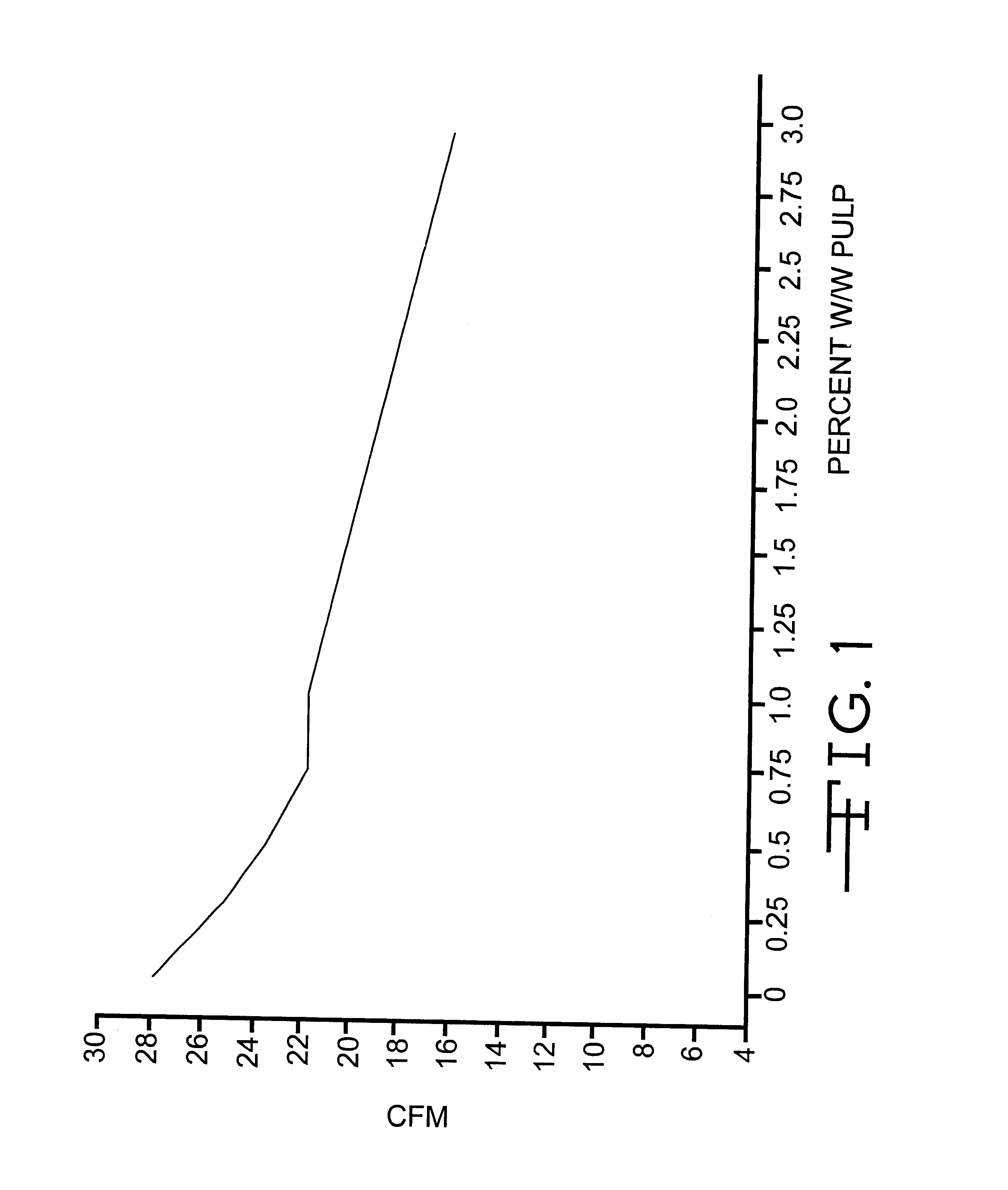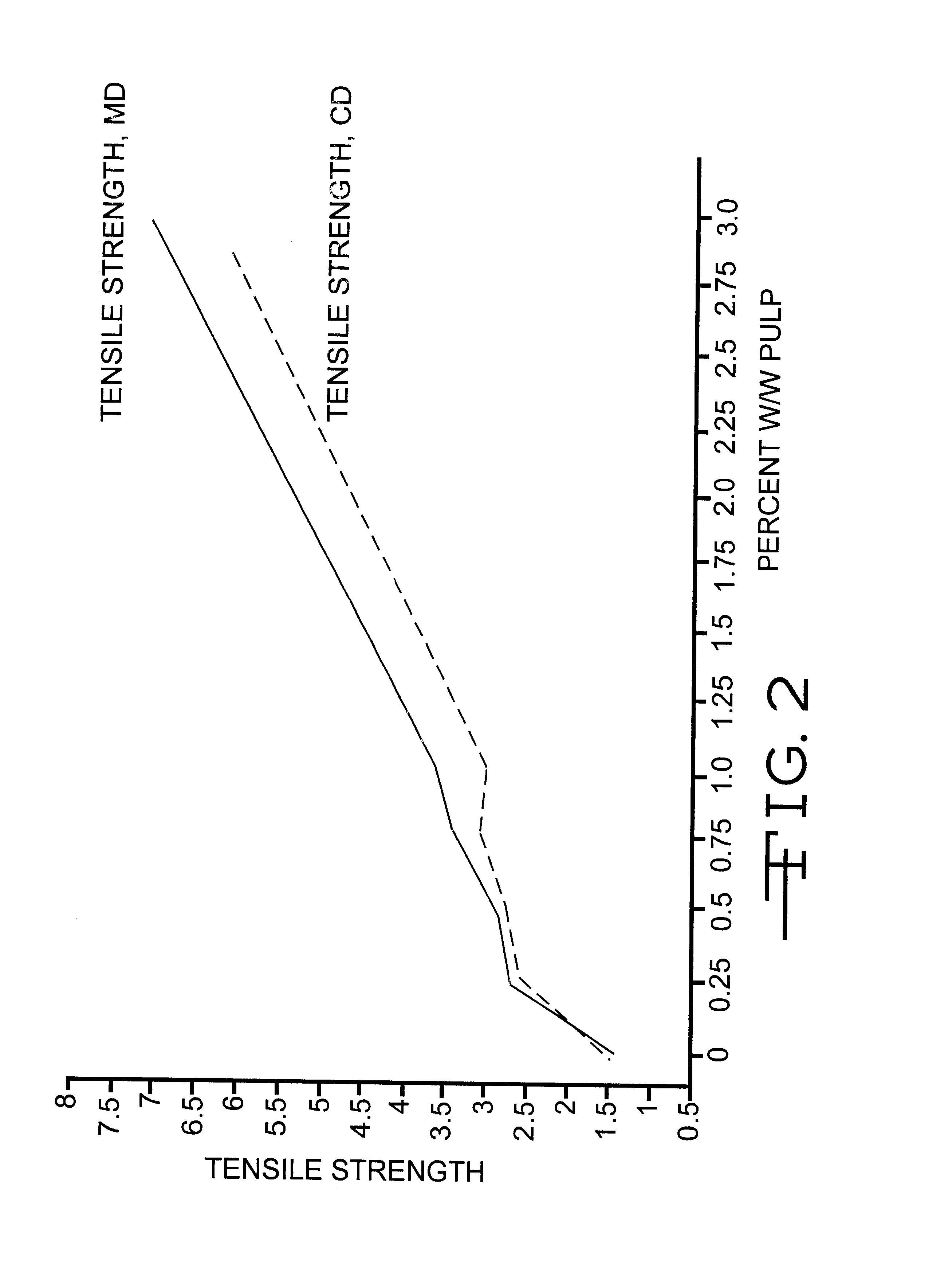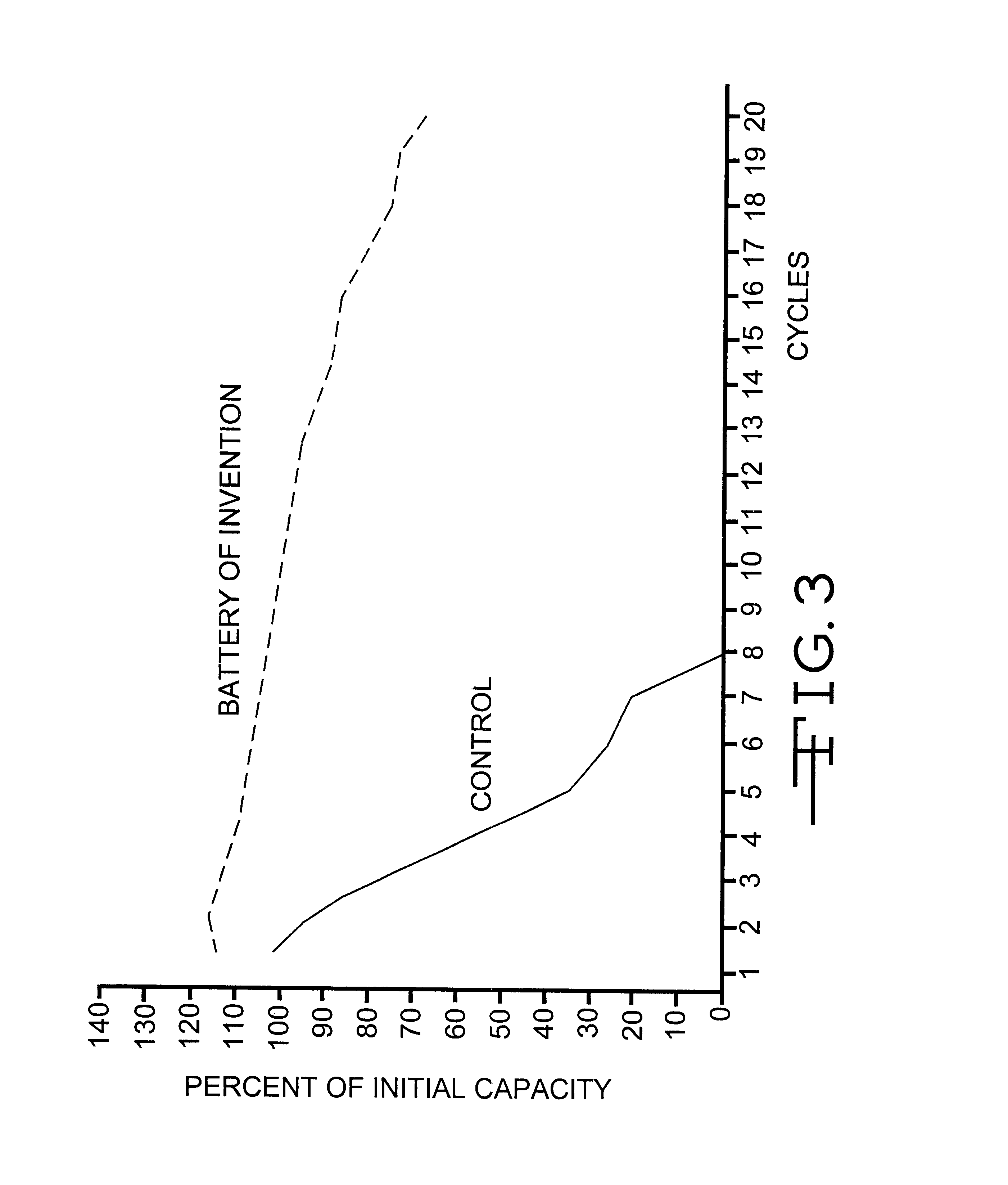Glass fiber separators for lead-acid batteries
a glass fiber and lead-acid battery technology, applied in the field of glass fiber separators for lead-acid batteries, can solve the problems of reducing the ability of a separator to wick acid, reducing the amount of acid a separator can hold, and not so well for furnishing glass fibers and silica powders, so as to improve the cut through resistance of a separator and increase the effect of som
- Summary
- Abstract
- Description
- Claims
- Application Information
AI Technical Summary
Benefits of technology
Problems solved by technology
Method used
Image
Examples
examples 2-6
Glass fiber separator hand sheets were also produced from other furnishes which contained varying amounts of kraft pulp that had been beaten to a consistency of 0.9906 percent and a Canadian freeness of 57 cc. The furnishes also contained the previously identified Schuller 206, 210X and A20-BC-1 / 2 inch glass fibers. The hind sheets were produce in a laboratory apparatus by depositing a furnish on a wire or screen, and draining the furnish. The apparatus comprised a tank with a screen in the bottom, a drain below the screen, a valve which opened and closed the drain, and paddles which were moved back and forth to simulate the movement of a furnish in commercial papermaking apparatus and establish a "machine direction" parallel to the direction of paddle movement. The furnish and the pulp were stirred for about two minutes, after which the valve was opened so that the water drained through the screen while the separator was retained on the screen. The furnish that was charged containe...
examples 7-11
Glass fiber separator hand sheets were also produced by the method described in Example 1 from other furnishes which contained varying amounts of kraft pulp that had been beaten to a consistency of 0.9906 percent and a Canadian freeness of 57 cc, and were then dipped in a latex, 3 percent w / w solids. The final compositions, in percent w / w, of representative ones of the furnishes are set forth in Table IX, below, and the properties of separators produced from the furnishes are set forth in Table X, below, where thickness of the separator material is in mm:
TABLE X
examples 12-16
Still other glass fiber separator hand sheets were produced by the method described in Example 1 from substantially the furnish of Examples 7-11 which contained various small amounts of kraft pulp that had been beaten to a consistency of 1.235 percent and a Canadian freeness of 57 cc. The final compositions, in percent w / w, of representative ones of the furnishes are set forth in Table XI, below, and their properties are set forth in Table XII, below, where thickness is in mm:
TABLE XII
Control glass fiber separator hand sheets were produced by the same method from a furnish which was composed of 80 percent w / w of Schuller 210X glass fibers, 10 percent w / w of A-20-BC 1 / 2 inch glass fibers and 10 percent w / w Schuller 206 glass fibers. The test results, average of two, are set forth in Table XIII, below, where thickness is in mm:
The data concerning Frazier permeability from Table X (Examples 12 through 16) and from Table XI (for the corresponding controls) are presented graphically in F...
PUM
| Property | Measurement | Unit |
|---|---|---|
| diameter | aaaaa | aaaaa |
| diameter | aaaaa | aaaaa |
| length | aaaaa | aaaaa |
Abstract
Description
Claims
Application Information
 Login to View More
Login to View More - R&D
- Intellectual Property
- Life Sciences
- Materials
- Tech Scout
- Unparalleled Data Quality
- Higher Quality Content
- 60% Fewer Hallucinations
Browse by: Latest US Patents, China's latest patents, Technical Efficacy Thesaurus, Application Domain, Technology Topic, Popular Technical Reports.
© 2025 PatSnap. All rights reserved.Legal|Privacy policy|Modern Slavery Act Transparency Statement|Sitemap|About US| Contact US: help@patsnap.com



